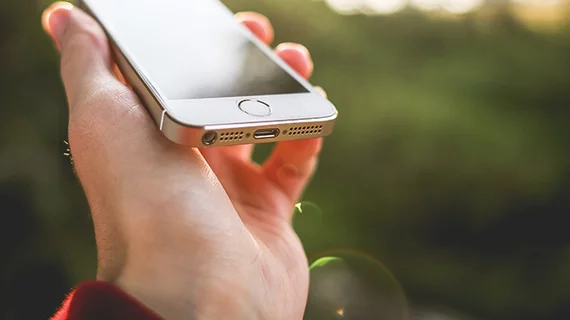Smartphone app detects diabetes with ‘reasonable discrimination’
A smartphone’s camera and flashlight features can detect changes in blood flow and identify type 2 diabetes with accuracy comparable to traditional, clinic-based risk scores, new research suggests.
“The potential to transition screening that’s normally done by physicians or nurses to the patient themselves through a smartphone app is a very novel concept and gives us a glimpse into how health care might work in the future,” Robert Avram, MD, a post-doctoral fellow at the University of California, San Francisco Medical Center and lead author of the new study, said in a press release.
Avram is set to present the work March 17 at the American College of Cardiology’s scientific sessions in New Orleans.
The researchers studied 54,269 people enrolled in the online Health eHeart Study who used the Aziumio Instant Heart Rate smartphone application, 7 percent of whom self-reported having diabetes. By using the smartphone’s built-in camera and photoplethysmography (PPG) signal—which picks up on vascular changes based on changes in blood flow—Avram et al. hypothesized users could be screened for diabetes because the condition can cause changes to blood vessels.
Variations in blood volume can be detected with each heartbeat; when the phone’s flashlight is shined on a fingertip, the amount of light reflected by the skin to the phone’s camera gives clues about what’s happening at the vascular level.
Avram et al. developed a deep-learning algorithm using those smartphone-derived PPG signals and found PPG signals alone could identify 72 percent of the people with diabetes in the study. The test had a negative predictive value of 97 percent, meaning only three out of 100 people who were predicted to not have diabetes actually had the disease.
When common risk factors for diabetes were added to the model, including age, gender, body mass index and race, the model identified type 2 diabetes with 81 percent accuracy.
“We’ve demonstrated that by using deep learning and a smartphone camera alone, we can also detect vascular changes associated with diabetes and with reasonable discrimination,” Avram said.
According to the release, up to one in three people living with diabetes are unaware they have the condition and remain untreated. Current screening protocols require individuals to make an in-person visit to a clinic and get blood drawn, but this smartphone-based solution could becomae an alternative for people who otherwise wouldn’t access the healthcare system.
“Based on our findings, this strategy could become a low-cost way to screen for diabetes at home because it can be derived from any optical system that has a camera and a flashlight, and most people have a smartphone,” Avram said. “We are hopeful this technology will assist with early diabetes detection. A positive screening test would still require a physician to confirm the diabetes diagnosis and establish appropriate treatment.”
The research group is also looking into how this technology works in detecting early versus late-stage diabetes, as well as validating the model in black and Asian populations, who were underrepresented in the study but disproportionately suffer from diabetes. Avram et al. said the screening tool will be commercially available once this work is complete, likely within the next two years.

